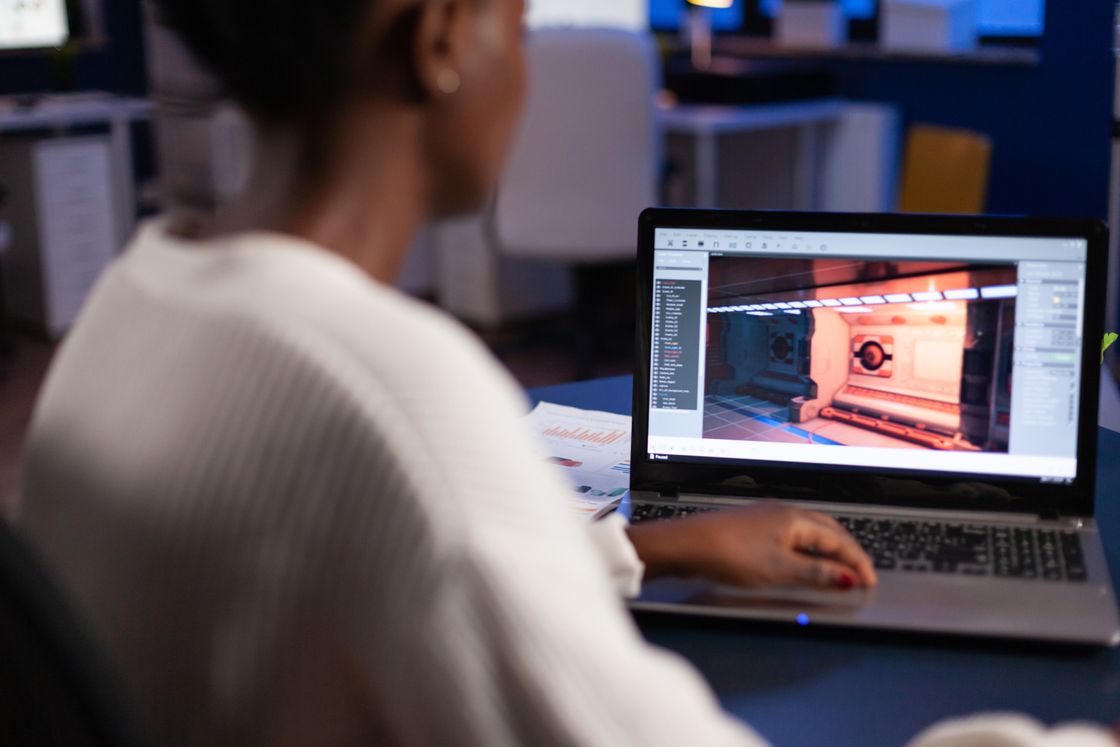3D game development is the creation of video games using three-dimensional (3D) graphics. The concept of a 3D game has been around for decades, but 3D game development has only recently become common.
Many companies now create 3D games for various platforms, such as PC, consoles, and mobile devices. In addition, online gaming platforms such as Xbox Live and PlayStation Network allow users to play 3D games online.
3D games are also available to play on home computers via virtual reality (VR) systems such as the Oculus Rift. In this article, I’m going to discuss the different aspects of 3D game development and reveal the untold roles behind this process.
Without wasting your time, Let’s get started:
What is Meant by 3D Game Development
3D games use 3D modeling, 3D printing, and 3D scanning to create realistic digital representations of real-life objects and environments.
These digital objects are then saved onto a video game disk or a virtual flash drive and brought to life via computer animation.
Motion capture is also used in some cases to give character models realistic movements. As games become more immersive, they’re also becoming increasingly entertaining.
However, developing a successful 3D game is difficult and requires specialized training.
Key Features of 3D Gaming
It is a dynamic and exciting entertainment technology that attracts gamers and non-gamers alike. Developed by agricultural engineering professor John Pendry in 1962, 3D gaming uses a computer and headset to create an immersive and interactive experience.
It is a cross between video gaming and film production, utilizing both 2D and 3D technology. Games can be played on a PC or console, but these systems are also used in film production, military training, architecture, and marketing.
3D gaming adds a third dimension to games and is more realistic than 2D games. Players can move around in 3D space and see the game from different angles.
This gives players a sense of agency; they feel as if they’re actually inside the game world. Furthermore, players can see more direct interactions with in-game objects.
For instance, instead of throwing a rock at a wall, players can throw the rock at a target- which causes a much greater impact. This sense of realism makes 3D games more engaging for the player.
Develop 3D Games – Step-by-Step Guide
In order to develop a 3D Game, you have to go through the following steps:
Step 1: Choose a Game Engine
Before you can begin developing your 3D game, you must choose a game engine. There are many game engines available for 3D game development, such as Unity, Unreal, CryEngine, and more.
Each engine has its own advantages and disadvantages, so it is important to research and decide which one best suits your needs.
But, the unity engine is recognized as the best 3D game development platform around the globe.
Step 2: Setting Up the Environment:
Once you have chosen your game engine, you will need to set up the environment to begin development.
This includes setting up the assets, such as textures, models, and audio. It also includes configuring the engine’s settings to best suit your game.
Step 3: Create the Game’s Assets
Once you have the environment set up, you can begin creating the game’s assets. This includes creating 3D models, textures, audio, and more.
Depending on the game engine you have chosen, it may have its own asset creation tools or you may need to use external software.
Step 4: Develop the Gameplay Mechanics
Once you have the game’s assets created, you will need to develop the gameplay mechanics. This includes creating the rules and game logic, as well as setting up the user interface and controls.
Role Of Programmer in 3D Game Development
A programmer plays a critical role in the development of a 3D game. They are responsible for writing code that creates the game’s objects and allows them to interact with each other.
They also create code to create the game’s artificial intelligence (AI) which enables the game’s characters to respond to the player’s actions.
Additionally, a programmer usually works with the game’s designers to ensure that the game plays according to the designer’s specifications.
The game programmer’s job is to create the game’s logic, or the underlying rules that govern the game’s objects and actions.
This can involve writing a scripting language that defines how characters interact with each other and the environment.
The programmer will also develop tools and libraries to help make the game development process easier and more efficient.
He also works with the game’s graphics engine, which is responsible for rendering the game’s visuals. This requires a deep knowledge of 3D math and physics in order to create realistic visual effects.
Moreover, the programmer will also need to develop algorithms that simulate natural phenomena, such as gravity and collision detection.
The programmer also collaborates with the game’s audio designer to create sound effects and music. They will need to create code that allows the game to synchronize the audio with the visuals and graphics.
Role Of the Designer in 3D Game Development
The role of the designer in 3D game development is to create an immersive experience for the player. They are responsible for creating the game world, the characters and environments within it, the gameplay mechanics, the story, and the overall design of the game.
This includes designing the levels, challenges, puzzles, and other game elements. They must also create the game’s user interface, audio and visual effects, and other components that will make the game enjoyable and engaging for players.
The designer also works closely with the game’s developers to ensure that all of the game’s elements are properly integrated and working together.
Read More: 3 Best Web Design Practices that you need to Follow
Role Of the Publisher in 3D Game Development
The role of the publisher in game development is to provide the financial resources necessary to bring the game to market.
The publisher will typically handle marketing, distribution, and promotion of the game as well as provide other resources such as legal advice, software licenses, and access to technology.
Additionally, they will often have the ability to influence the game’s design and development, ensuring that it meets their standards and expectations.
As such, the publisher is essential in ensuring the success of a 3D game, as it is their resources and guidance that help bring the game to life.
Conclusion
In conclusion, 3D game development is a complex process that involves many different aspects. This article has provided an overview of some of the most important aspects of 3D game development.
If you have any questions or comments, please share them in the comments section, and please share this article with your network. Thank you for reading!




